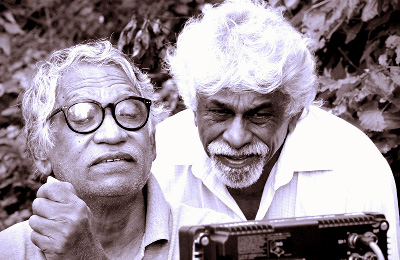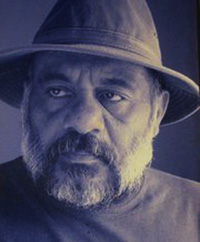‘Bambaru Avith’ in Cannes Classics
Sri Lanka’s 1978 auteur film ‘Bambaru Avith’ (The Wasps Are Here) directed by Dr. Dharmasena Pathiraja has been selected as one of the 25 Classics in the world at the renowned Cannes Film Festival in France. The sole-surviving 35mm film positive of the film has undergone 4K film and sound restoration carried out by L’Immagine Ritrovata and it is to be featured this year’s Cannes Classics 2020. Presented by Asian Film Archive, the raw and restored 4K scans, a new 35mm picture and sound negatives, and a new positive print of the restored version of the film have been produced and are preserved by the Archives.
Since the beginning of the 2000s, the Festival de Cannes created Cannes Classics, a selection allowing to display the work of valorization of heritage cinema carried out by production companies, right-owners, cinematheques or national archives from around the world. “Now an essential component of the Official Selection, in a dimension to the history of cinema from which many international festivals have got inspired, Cannes Classics presents the masterpieces and rarities of the history of cinema in restored copies,” festival organisers announced.
“Because the Festival de Cannes also provides itself with the means of achieving the mission of enchanting the relationship of today’s audience with the memory of cinema, Cannes Classics sets the prestige of the biggest festival in the world at the service of rediscovered cinema, accompanying all the new exploitations of great works from the past: theatrical releases, DVDs / Blu-rays, distribution on platforms or on VOD”.
The programme of Cannes Classics 2020 edition consists of twenty-five feature films and seven documentaries.
This year’s Cannes film festival which was scheduled to be held from May 12 to 23 did not take place in its original format due to the Covid-19 pandemic.
Since the Festival de Cannes did not take place, Cannes Classics 2020 will be hosted, in whole or in part, by the festival Lumière in Lyon from October 10-18, and by the Rencontres Cinématographiques de Cannes from November, 23 to 26, the festival announced.
Interestingly the festival organisers referred to Pathirja’s ‘Bambaru Avith’, as “an unknown masterpiece from Sri Lanka”,
Among the list of 25 films are “In the Mood for love” by Wong Kar-wai, “Friendship’s Death” (1987, United Kingdom) by Peter Wollen, “The Story of a Three-Day Pass” (La Permission) (1967,France) by Melvin Van Peebles, ‘Get Out Your Handkerchiefs’ (1977, France) by Bertrand Blier, ‘Hester Street’ (1973, USA) by Joan Micklin Silver ‘New Year Sacrifice’ (1956, China) by Hu Sang, ‘La Poupée’ (1962, France) by Jacques Baratier, ‘The Hourglass Sanatory’ (1973, Poland) by Wojciech J. Has, L’Amérique insolite (America as Seen by a Frenchman) (1959,France) by François Reichenbach, ‘Deveti krug’ (The Ninth Circle / Neuvième cercle) (1960, Croatia) by France Štiglic, and Muhammad Ali the Greatest (1974, France) by William Klein.
The selection of ‘Bambaru Avith’ is a much deserving international recognition. Pathiraja follows Dr. Lester James Peries who received the same recognition for his ‘Gam Peraliya’ (The changing village) in 2008. The French Embassy celebrated this event by screening the restored copy ‘Gamperaliya’ in Colombo.
Bambaru Avith’ centres on exploitation of the poor and confrontation of capitalist and Marxist influenced doctrines. Set in the coastal village of Kalpitya, a local “boss” exploits the fisherman until a group of leftist youths challenge him. Their representative attempts to hold a speech before the villagers but attracts little interest and the empty square is representative of futility of his effort and he departs for the city. Meanwhile a police post, the representation of authority is being set up in another part of the village.
Produced by Pathiraja himself and Thilak Godamanne for Saranga Salaroo, ‘Bambaru Avith’ represented Sri Lanka at 1978 Moscow International Film Festival, screened at Mostra and Los Angeles Film Festivals, won Presidential awards for the Best Film and Best Director – 1979 and OCIC awards for Best Film and Best Director – 1979 among others and it was named the fourth Best Film made in the first 50 years of Sri Lankan film history.
Influenced by the European “New Wave” of the 1960s, Pathiraja’s gritty black-and-white dramas, took completely different route from the popular Sri Lankan films, photocopies of South Indian or North Indian-Bollywood formats. Pathiraja’s masterpiece, explores tradition, exploitation and the perhaps unintended consequences of capitalism through the clash between a local boss and an urban interloper in a tiny fishing village.
| Pathi would have been thrilled- Donald | |
| After 43 years Donald Karunaratne, Dharmasena Pathiraja’s closest friend and cinematographer of almost all his films, now living in California, at a place 20-minutes away from Hollywood, recalls how Pathi, (the name master filmmaker fondly called in the industry) brought the script of ‘Bambaru Avith’ written in a few sheets of papers and how it was developed into a film in remote ‘Kalpitiya’.  Dr. Dharmasana Pathiraja with Donald “How Pathi told me about the story, went to select the location, shooting for nearly one month and how post-production was done, everything is like a film itself,” says Donald. “One day Pathi said his plans to shoot the film in Kalpitiya and he wanted to go there. He said we could go in the morning and come in the evening. So I borrowed my wife’s grandfather’s car after dropping him at his office and we went to Kalpitiya to look for locations”, described Donald. “On the day when we were travelling to Kalpitiya on the main Colombo-Mannar road and as we turned from Palaviya junction to get to the ‘hand like thing’ in Sri Lanka map, the driver accidently knocked against the roof of a shop at the junction,” said Donald with a smile. Our main and only location was Kalpitiya and we got a tremendous support from the police, Navy and the villagers. We were lodged at the Kalpitiya Rest House which had only one room and it was given to two ladies Malani Fonseka and Ruby de Mel. The only request Ruby made was to have a bathroom with a commode as she had then undergone a surgery. The rest house didn’t have a bathroom with a commode and it was we who fixed the commode before we start the film,” Donald said trecking along the movie making memory of ‘Bambaru Avith’. “Some others slept on mats spread along the open veranda of the rest house. But most of us slept under the massive Siyambala (Tamarind) tree in front of the guest house. “The film colour was not black and white but it was grey and white. I did it with a purpose; to get the dry and remote atmosphere of Kalpitiya. But many critics could not or did not understand this,”Donald award winning cinematographer said. “I still can remember that every morning Pathi and I used to go to the location and plan days shooting. By the time we return others were ready with their breakfast taken”. “Pathi would have been amazed to see that his film is in the Cannes. I am sad that he is not there to celebrate this. Who thought that he would go before me,” Donald said grieving over the loss of his dear friend who passed away in 2018. “I could not understand much about Pathi’s politics and what he talked about the working class and the bourgeoisie class,”. “I am so thrilled to know that this film which we started as group youngesters has gone to Cannes and got world recognition. I have no word to explain it,” said Donald in tears.
|
| “There was socialism at the set” | |
| W. Jayasiri, actor and lyrics writer of film’s iconic song ‘Udumbara Hinahenawa’, described how the funds were found and the film was made. “It was from 50 percent loan scheme given by the National Film Corporation (NFC). But the halfway through money was over and it was Thilak Godamanna who helped to finish the film.  W. Jayasiri Making of the film was like a fairytale. It was a wonderful experience.Kalpitiya was so remote that the Rest House keeper’s wardrobe was the fridge at the resthouse. His clothes were packed in the fridge, Jayasiri said with a hearty smile. The song ‘Udumnbara’ is considered as one of the milepost in Sri Lankan film song history. “Compared to other songs it is longer than a normal song. In the film Pathi divided it to three parts; first part for the title, second part after Cyril’s death and the final part at the end. After it was given for the musical interpretation, Master Premasiri Khemadasa did all the wonders. It was not one song but three in one,” said Jayasiri. The production of ‘Bambaru Avith’ was completely different from the production of traditional mainstream film production style. We were all equal and united. Everyone ate together, lived together and enjoyed the same facilities. But when making ordinary films at that time, stars had special facilities, main crew different facilities–a complete capitalistic structure. But in ours was a socialist structure where everybody was equal. We thoroughly enjoyed the shooting in Kalpitiya. Now the lobsters are a luxury food but every evening we all used to enjoy hoppers with lobster sambol at “Bachcha’s Kade’ (kiosk) closer to Kalpitiya beach. It was just 25 cents. Pathi never got any support from the mainline politics. The film also received step-motherly treatment. It was J. R. Jayawardene’s government. When it was to be screened, there was no circuit.There were only four circuit and then Cabinet Minister Tyronne Fernando had done film ‘Puran Appu’ and Mr. Fernando wanted to release his without waiting in the queue. So government specifically created a special circuit called 5th circuit to release ‘classical’ films. “Bambaru Awith” was screened in the first circuit but it won all the awards that year, Jayasiri said with a smile. I am so thrilled that ‘Bambaru Avith’ has been selected as one of the best 25 classics. There were only a few critics like L. O. de Silva, Reggie Siriwardena and Piyal Somarate who stood by Pathi. It was alternative critics who were always there for him. We couldn’t finish the film and Pathi had a close friend called Ananda Basnayake, the owner of Dress Sense and his brother-in-law Thilak Godamanna of Nine Hearts came to help us to finish the film. “Bambaru Avith has proved that if we do a good work, we would reap good results. This will happen even after so many years. I am sad that Pathi is not here to enjoy this international achievement. |


